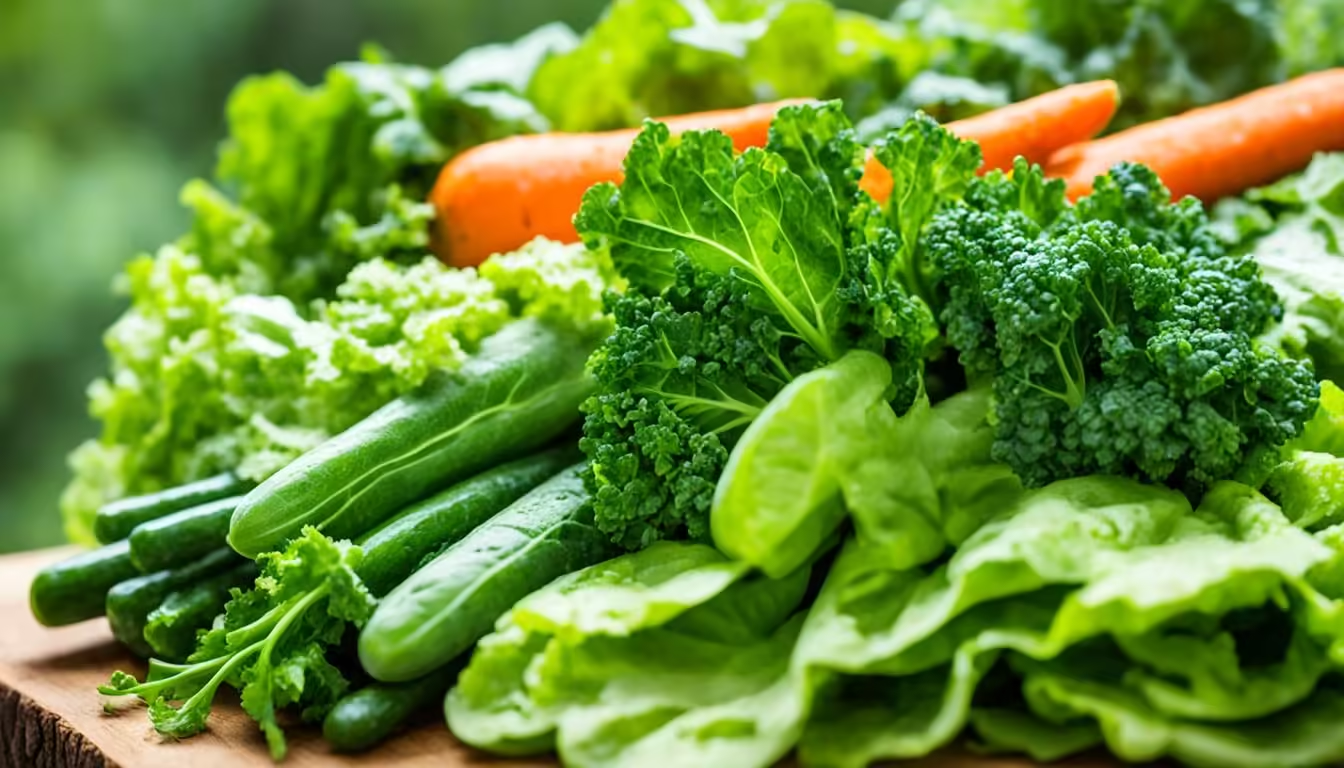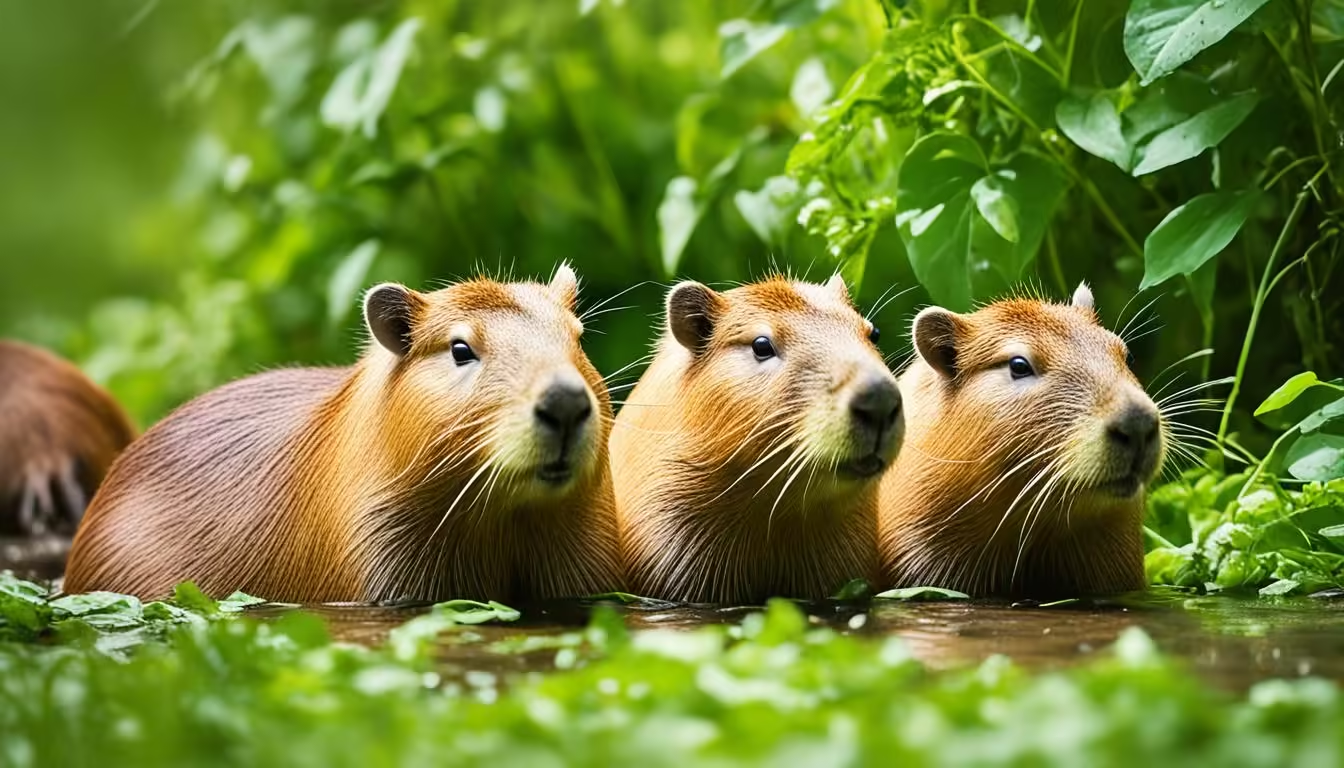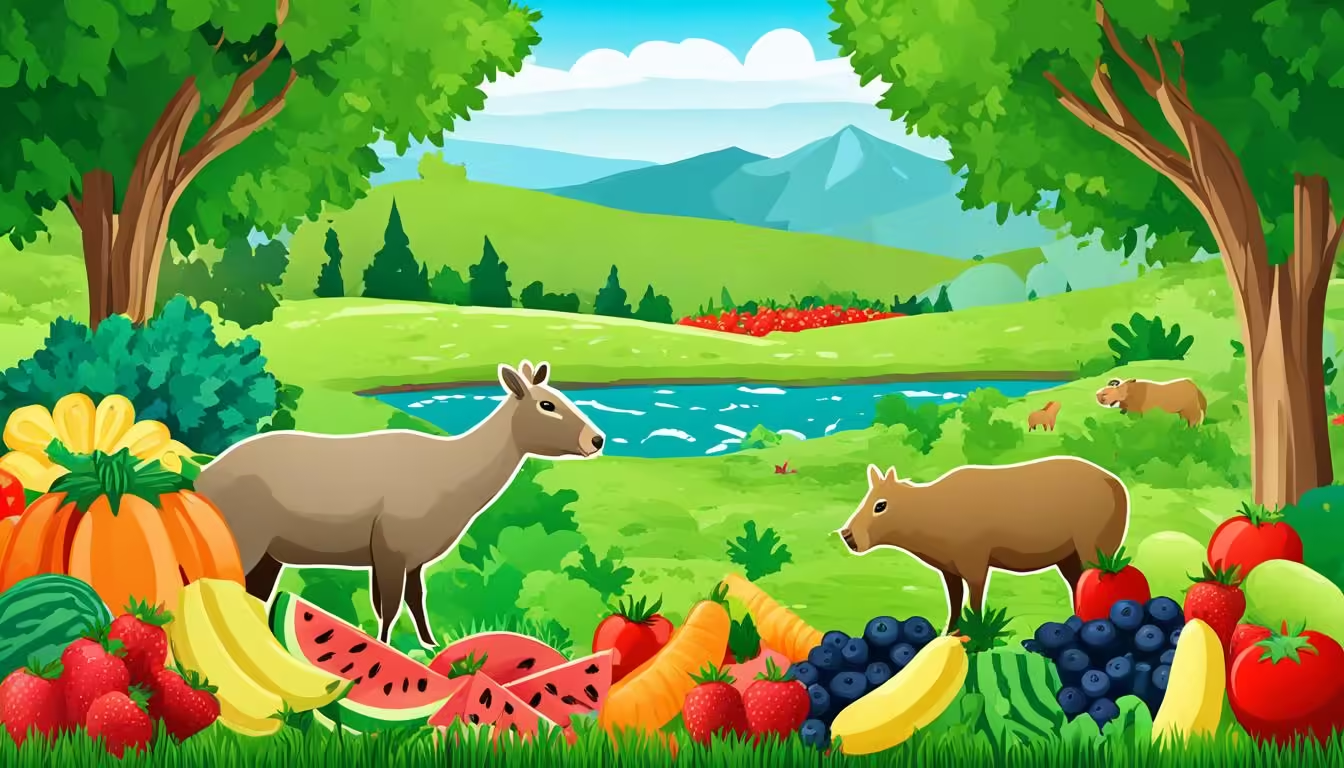Capybaras are the biggest rodents in the world and love plants. They live in South America and enjoy eating many types of plants. It’s important to know what they like to eat to keep them healthy. We’ll explore their diet and how to care for them in this article.
Key Takeaways
- Capybaras primarily eat grasses and aquatic plants.
- They have specific dietary preferences that are crucial for their health.
- Understanding capybara eating habits helps in their care.
- Fresh vegetation plays an important role in capybara nutrition.
- Caring for capybaras includes providing a balanced diet.
Introduction to Capybara Diets
Capybaras are herbivorous animals that live on a diet rich in plants. They love environments full of tough plants. This shows how important their diet is to their health.
Their main foods are grasses, leaves, and water plants. These foods are key to their health. By learning about their eating habits, we can make sure they stay healthy. This helps both pet capybaras and those living in the wild.
What Are Capybaras’ Favorite Foods?
Learning about capybaras’ favorite foods helps us appreciate these gentle creatures more. Their diet shows a deep link to their natural world. It highlights the foods they naturally choose in the wild.
Natural Preferences in the Wild
Capybaras mainly eat grasses, leaves, and aquatic plants. In their wetlands and savannas, they eat the plants around them. This lets them have a varied diet, keeping them healthy and happy.
Common Vegetation They Enjoy
Capybaras have clear favorites when it comes to plants. Their top picks are:
- Tall grasses
- Sedges
- Water plants
- Various types of leafy greens
These foods give them the fiber they need and fit their plant-eating lifestyle. Their diet shows how important variety and availability are in their natural world. These foods are key to their survival.
| Vegetation Type | Benefits |
|---|---|
| Tall Grasses | High in fiber, aids digestion |
| Sedges | Rich in nutrients, suitable for grazing |
| Water Plants | Provides hydration and essential minerals |
| Leafy Greens | High in vitamins, promotes overall health |
Understanding Capybara Eating Habits
Capybaras are known for their friendly nature and interesting eating habits. They love to eat grass all day. This is key to their health and happiness.
Grazing Behavior
Capybaras are herbivores, which means they eat plants. They spend a lot of time eating grass and other plants. This helps them stay healthy and keeps their digestive system working well.
They have strong teeth made for eating tough plants. This lets them eat a wide variety of grasses.
Social Eating Dynamics
Capybaras like to eat with their friends. Eating together makes them feel safe and builds strong bonds. It’s a way for them to connect and support each other.
This shows that eating is more than just a basic need for capybaras. It’s a key part of their social life.
| Aspect | Description | Importance |
|---|---|---|
| Daily Grazing | Capybaras graze continuously for around 10 hours each day. | Essential for meeting dietary fiber needs. |
| Group Feeding | Feeding in groups promotes safety and social bonding. | Enhances social behavior and reduces stress. |
| Plant Variety | They consume various grasses and aquatic plants. | Supports diverse nutritional intake. |
Fresh Vegetation: A Capybara’s Delight
Capybaras love fresh vegetation, which is key to their health. Eating a mix of the right grasses and leafy greens keeps them healthy. Knowing what grasses they like and the benefits of leafy greens helps them get the nutrients they need.
Types of Grasses They Prefer
These big rodents enjoy many types of grasses, which are a big part of their diet. Some top choices include:
- Bermuda grass
- Timothy grass
- Orchard grass
- Ryegrass
Offering these grasses gives capybaras digestible food that meets their fiber needs. Eating fresh grass keeps their digestive health in check.
Leafy Greens and Their Benefits
Adding leafy greens to a capybara’s diet has many perks. Good leafy greens for capybaras are:
- Romaine lettuce
- Kale
- Collard greens
- Beet greens
Leafy greens are packed with vitamins and minerals, making their diet balanced and moist. These veggies are great supplements, adding variety to their diet and boosting health. Having access to fresh vegetation keeps capybaras content and true to their natural eating habits.
Water Plants: A Vital Part of Their Diet
In the wild, capybaras live in places full of water plants. These plants are key to their diet, helping their health and meeting their nutritional needs. They eat different water plants, which gives them the hydration and nutrients they need.
Types of Aquatic Plants
Capybaras eat many types of water plants that help their health. Some common ones are:
- Water lilies
- Cattails
- Duckweed
- Water hyacinth
- Pondweed
How Water Plants Contribute to Their Health
Aquatic plants do more than just taste good for capybaras. They are a key source of vitamins and minerals that boost their health. Eating these plants helps with:
- Digestive health: The high fiber helps with digestion.
- Hydration: They get natural water from these plants.
- Nutritional balance: Eating a variety of plants gives them all the nutrients they need.
Adding different aquatic plants to a capybara’s diet is important for their health. These plants are crucial for keeping them healthy and full of energy. They make a tasty part of their diet.
The Role of Fruits and Vegetables
Fruits and vegetables are key to a capybara’s diet. They add variety and make meals more enjoyable. It’s important to know which ones are safe and good for them.
Favorite Fruits of Capybaras
Capybaras enjoy a variety of fruits for their health and taste. Their favorites include:
- Apples: A crunchy delight that should be served without seeds.
- Bananas: Sweet and soft, these fruity treats offer a tasty reward.
- Melons: Juicy and hydrating, perfect for warm days.
But, it’s important to give them fruits in moderation because of their sugar. This keeps them healthy while still letting them enjoy treats.
Safe Vegetables for Treats
Vegetables are also great snacks for capybaras. They can safely eat:
- Carrots: High in vitamins, they are a colorful and crunchy choice.
- Bell Peppers: Packed with nutrients, these come in various colors to keep meals interesting.
- Cucumbers: Refreshing and hydrating, ideal for warm weather.
Adding these vegetables as treats makes their diet more interesting and nutritious. A balance of fruits and vegetables keeps them happy and healthy.
Capybara Diet in Captivity
Feeding capybaras in captivity is different from their wild diet. They need special food because they can’t eat the same plants they would in the wild. It’s important to give them a variety of foods to keep them healthy.
Adjusted Feeding Practices
For capybaras, high-quality grass hay and special rodent pellets are key. Adding fresh veggies to their diet gives them important nutrients. Watching how much they eat and adjusting their food helps keep them healthy.
This good feeding routine helps them live better lives.
Supplements for Nutritional Balance
Capybaras might need extra nutrients that aren’t in their food. Supplements can help make up for what they’re missing. Options include vitamins and minerals for rodents. Always talk to a vet who knows about exotic animals to make a diet plan just for your capybara.
Capybara Snacking: Treats They Love
Capybaras love snacks, and adding human food treats to their diet can be fun. It’s important to pick safe options that are good for them. Here are some great human food choices for capybaras.
Occasional Human Food Treats
Capybaras can enjoy many human food treats, making their diet more exciting. Some good options include:
- Oats: A nutritious addition that capybaras often enjoy.
- Whole-grain bread: Give small pieces sparingly.
- Bananas: A sweet treat they’ll love.
- Carrots: Chop into small pieces for easy eating.
Homemade Treat Recipes
Making homemade capybara treats is fun and rewarding. Here are two easy recipes:
- Oat and Banana Bites: Mix mashed banana with rolled oats. Shape into small balls and chill until hard.
- Vegetable Medley: Combine grated carrots, zucchini, and a bit of oats. Bake into shapes until crispy.
These treats add variety to their diet and keep them interested in their meals. Always give these treats in moderation to keep your pet healthy and well-nourished.
What Can Be Harmful to Capybaras?
Capybaras eat a wide variety of foods, but some can be bad for their health. It’s important to know which foods are harmful. This section will talk about foods to avoid and signs of diet problems in capybaras.
Foods to Avoid
Some foods can really harm capybaras. Here are some bad foods for them:
- Processed foods like chips or cookies
- Sugary treats, including candy and pastries
- Certain fruits high in sugar, like bananas and grapes
- Dairy products, which are not good for their stomachs
- Beans, which can cause stomach problems
Signs of Dietary Distress
It’s important to watch your capybara for signs of diet problems. Look out for these signs:
- Refusal to eat or sudden changes in appetite
- Weight loss or lack of energy
- Digestive issues, such as diarrhea or constipation
- Changes in behavior, becoming less social or more withdrawn
Remember these harmful foods and watch for signs of distress. This will help keep your capybara healthy.
Caring for Your Capybara’s Diet
To keep your capybara healthy, capybara meal planning is key. A diet that meets their needs can stop many health problems and help them live longer, happier. It’s important to know what they like and need to eat.
Creating a Balanced Meal Plan
When making a meal plan, think about adding these food groups:
- Fresh grasses
- Leafy greens
- Fruits in moderation
- Vegetables
Feeding them at the same time every day helps their digestion. Keeping track of what they eat makes sure they get all the nutrients they need.
Importance of Fresh Water
Just as important is giving them fresh water for capybaras. Clean water is key for their digestion and staying hydrated. Changing the water often stops it from getting dirty and keeps them drinking well.
| Food Type | Benefits |
|---|---|
| Fresh Grasses | High in fiber; aids digestion |
| Leafy Greens | Rich in vitamins; boosts immunity |
| Fruits | Provides sugars and hydration |
| Vegetables | Variety of nutrients; promotes health |
Having a good diet and always having fresh water means capybaras can live a long, healthy life.
Understanding what capybaras eat is key to their health and happiness. They love fresh grasses, leafy greens, and sometimes fruits and veggies. These foods are important for their diet.
It’s also important to give them a variety of foods. This variety helps them get enough energy and keeps their minds sharp. Whether they’re in the wild or at home, a balanced diet is crucial.
Knowing about a capybara’s diet helps caretakers feed them right. A good diet keeps your capybara happy and healthy. With the right food, your capybara will be a joyful friend.



